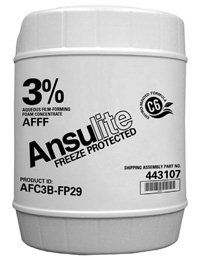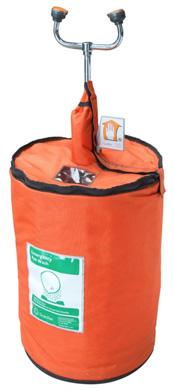| The Home page of ILPI's Safety Data Sheet (SDS) Resource, the leader in SDS information since 1995! | |
| The history and philosophy behind this resource. | |
| A curated collection of books and reference materials concerning Safety Data Sheets and closely related topics. | |
| Paste your plain text SDS into the SDS-Demystifier, and it will be converted into a hypertext-enriched document with links to detailed explanations of each key term. | |
| An extensive list of frequently asked questions about Safety Data Sheets including regulations, content, compliance, and more. | |
| A humorous take on Safety Data Sheet jargon. Fill in the blanks on our entry form to generate a personalized Unsafety Data Sheet to share with your coworkers. | |
| Since 1995, we've maintained this massive curated list of the best places to find Safety Data Sheets on the Internet. | |
| You are here! Way more than a glossary, this hypertext-enhanced resource covers hundreds of SDS-related terms and expert knowledge. Each entry includes both the SDS relevance and links to additional authoritative resources. | |
| Archived results of Safety Data Sheet related polls taken by some of our millions of site visitors | |
| The OSHA regulations behind SDS regulations, including the inspection guidelines and over 400 official interpretations letters under the Hazard Communication Standard | |
| Commercial suppliers of SDS authoring and management software as well as cloud compliance services. | |
| Commercial companies that will create SDS's for your specific needs as well as SDS translation companies. |

Safety signs, banners, and scoreboards? Get yours at Safety Emporium!

Get your freeze-protected fire fighting foam concentrates and other extinguishing agents at Safety Emporium.
Definition
Freezing point is the temperature at which a liquid becomes a solid at normal atmospheric pressure. Alternatively, a melting point is the temperature at which a solid becomes a liquid at normal atmospheric pressure.
A more specific definition of freezing point is the temperature at which solid and liquid phases coexist in equilibrium. The normal freezing point is the temperature at which a substance melts (or freezes) at one atmosphere (760 torr = 760 mm Hg = 14.7 psi = 101.3 kPa) of pressure.
Additional Info
Melting points can be determined by visual inspection or by monitoring the temperature of the liquid with time. When the freezing point is reached, the temperature of the solution will no longer drop until all the liquid has frozen.

Melting points may be lowered (depressed) by the addition of a soluble material to the solution. The degree of lowering depends on the solvent and is easily predicted using a simple equation that is beyond the scope of this resource (see below).
Pay close attention to the temperature units when reporting or reading a melting/freezing point. Most scientific literature uses the Celsius scale whereas (in the US), most consumer products use the Fahrenheit scale. The two are not interchangeable.

Protect your eyes with freeze-resistant eye/face washes and safety stations from Safety Emporium.
SDS Relevance
Per Appendix D of 29 CFR 1910.1200, the OSHA Hazard Communication Standard (HCS), the melting/freezing point is a required piece of data on a Safety Data Sheet. Assuming the sheet was issued since 2015 and is GHS-compliant, you will find this data listed in section 9 of the SDS. Prior to HCS 2012, there was no legally required format for (M)SDS's and this piece of data, while still required, could appear anywhere in the document.
HCS 2012 does not specify temperature units. Typically, you will find both Fahrenheit and Celsius on an SDS, but this is not always be the case, particularly for laboratory chemicals, so be certain that you know which scale is being used!
The freezing/melting point is an important material property to know and the SDS is your primary resource for this information. Some materials must be prevented from freezing to protect their integrity or the product packaging. Likewise, most (but not all) materials expand when heated above their melting point and may overflow or burst their container. Likewise, aqueous solutions tend to expand when they freeze which can also burst the container. Section 7 (handling and storage) of the SDS will note if there are any (temperature-related) considerations for safe storage of the material.
Further Reading
- Melting Point, Freezing Point, Boiling Point at Purdue University.
- Freezing Point Depression in Solutions at HyperPhysics.
- Fun with Liquid Nitrogen here on our site.
- Colligative Properties at Chemistry Explained.
- Why Does Salt Melt Ice? at General Chemistry Online.
See also: Boiling point, Vapor pressure.